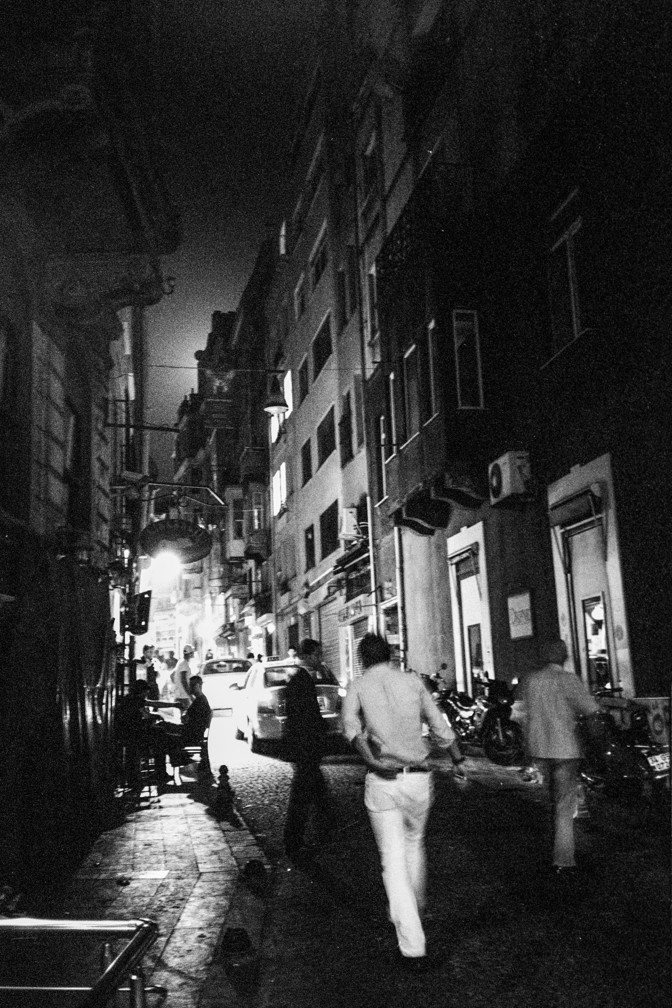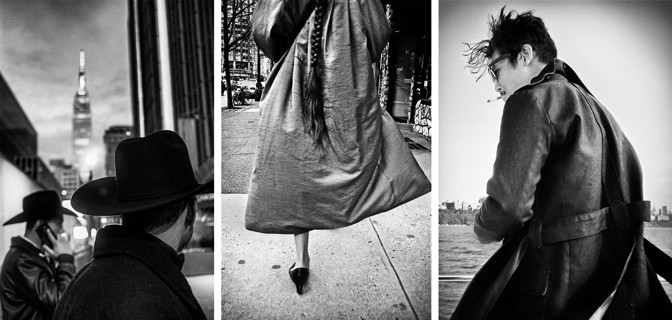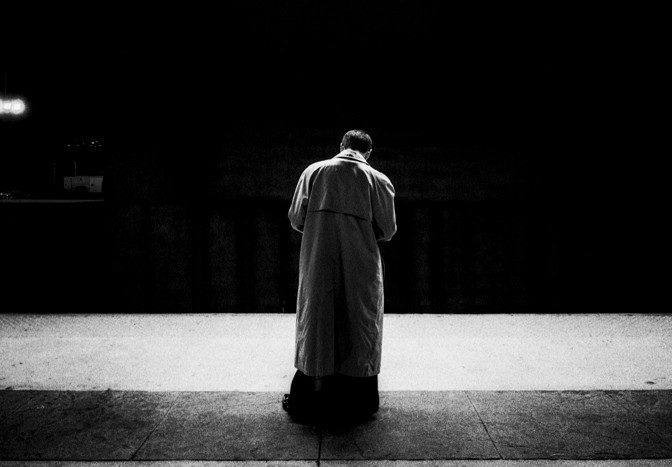Photographs by Devin Yalkin
Detective Elliot Stabler walks into an empty interrogation room with purpose. He’ll soon be questioning a perp who beat murder and rape charges 14 years ago, and he can’t afford a repeat, so he gives himself the edge. He cranks the thermostat up 20 degrees; he removes the screw from a chair, giving it a wobble; he swivels the light bulbs slightly out of place so the lighting flickers. With these tweaks, a confession is nigh. Yes, this is coercive, but it’s okay—he’s one of the good guys.
Before months of protests against police brutality renewed scrutiny of law enforcement, many Americans might have seen the Law & Order: SVU detective’s coercion as noble. Now the tide is turning, and taking cop shows with it. In June, Cops, the documentary ride-along show that took viewers to the front lines of the wars on drugs, poverty, and driving while Black, was canceled by the Paramount Network. The same fate befell A&E’s Live PD, a hugely popular successor to Cops. Discovery’s Body Cam, another spin on the gonzo-cop formula, has not aired since the end of June; on social media, fans await news of its fate with dread.
Shows about fictional police officers remain on air, but many of their creators are newly self-conscious. On Twitter, Tom Scharpling, an executive producer for Monk, lamented that he had “contributed to the larger acceptance that cops are implicitly the good guys.” The former Law & Order: SVU showrunner Neal Baer expressed regret that Detective Stabler “was smacking people around” while doing police work. (In “Rage,” the SVU episode described above, Stabler spits on a suspect.) Cast members and the showrunner of the sitcom Brooklyn Nine-Nine donated $100,000 to the National Bail Fund Network; Stephanie Beatriz, an actor on the show, almost sounded like she was tithing. “If you make tens or hundreds of thousands of dollars a year in residuals from playing a cop?” she tweeted. “I’ll let you do the math.”
Some critics have suggested the problem with cop stories amounts to a detachment from real crime statistics or the history of policing. Cord Jefferson, a writer on the HBO series Watchmen, advanced this argument in a recent interview with Variety. In his view, writers downplay the racism in police forces, something Watchmen does not do: “We didn’t want to shy away from the fact that in many places in America, members of the police were also members of the Klan. There are absolutely many parts of America where that is still a problem today.”
[Read: Saying goodby to ]Law & Order
Courtney A. Kemp, the showrunner of Power, expressed a similar sentiment in a Hollywood Reporter op-ed: “On TV—unlike reality—rarely is someone arrested because of his/her/their race.” In her view, hard facts would undermine the valor that cop shows sell to keep viewers hooked; if cops are racists, they are no longer heroes. The only way to dispel that fantasy, she argued, is to fill writer’s rooms and executive suites with people who can’t afford to perpetuate it.
Given the pause in television production due to COVID-19, it may take years to see whether creators act on their guilt and transform depictions of policing in Hollywood. In the meantime, there is already a model for telling complex stories of danger, morality, and community without centering folks with badges and guns: noir.
Once a niche film genre about hard-boiled detectives, noir has grown into a broad narrative tradition that explores moral ambiguity and spans literature, comics, and video games. In those works, the mechanics that make police stories so appealing have been steadily untethered from cops—and sometimes even crime. Rather than reforming portrayals of policing to be more balanced, realistic, or diverse, noir writers have gradually dispensed with cops altogether. That makes noir a useful blueprint for a society that is changing its relationship with policing.

from a storytelling standpoint, cop fiction pushes all the right buttons. Police forces have a unique license to gather evidence, identify suspects, and pursue leads—a combination of skills that makes them narrative machines. For a single case, police might visit a pizza shop, raid a brothel, lock down a hospital, and surveil a parking lot. In pursuit of a suspect, there might be a foot chase, a fist fight, and an interrogation. The possibilities are endless—and that’s the point. A cop’s workplace is the case; their duties take them everywhere. That mobility offers an infinite range of settings, characters, and twists.
The best cop stories probe the ambivalence of police power. Justified, which stars Timothy Olyphant as Deputy U.S. Marshal Raylan Givens, begins with Givens as a gunslinging cowboy, but he quickly learns to utilize other tools. Though shootings can be ruled “justified” upon internal review, his gun narrows the potential outcomes of an encounter with a suspect. Every time he fires or even brandishes his gun, he risks revealing himself as an angry, destructive brute; when he doesn’t shoot, he proves his cleverness and empathy.
[Read: The unreality of ]Cops
That will-he/won’t-he dynamic is the heart of the show. Most episodes are split so that the villain of the week pursues an objective as much as Givens does. The marshal struggles to avoid pulling the trigger, and his marks wrestle with the choice between flight and surrender. That constant tension makes Justified great television, and excellent noir, because it blurs the line between police officers and the people they pursue. But even with its ambivalence, Justified tacitly naturalizes the police, like most cop stories do. Cases keep coming in. Crime never recedes. Cops are always needed. Rather than mission creep, there’s mission inertia, crime fighters and criminals re-spawning in an infinite loop.
At the level of archetype, fiction has mined every species of cop: dirty, crooked, straight, renegade, superhero, consultant, dog, mall, Robo. Even at the level of genus, the numbers are stifling: vice, SWAT, major crimes, sexual crimes, precincts, homicide detectives, criminal profilers, ad infinitum. As the activist Rashad Robinson (who petitioned for Cops to be canceled back in 2013, when it was on Fox) recently told NPR, “the cop character is the most overdeveloped character on TV.” We’ve reached peak cop.

Noir is best known for femmes fatales, despondent PIs, and chiaroscuro lighting, but it’s also become a lens for zooming in on the inner workings of a community. The film A Most Violent Year, for instance, follows businessman Abel Morales as he attempts to close a huge property purchase without resorting to violence. It’s set in New York City in 1981, a year in which the city’s murder rate reached a record high. Morales feels the ambient pressure as the drivers of his fleet of oil-delivery trucks are threatened by armed hijackers. As Morales attempts to close his deal, we see him haggle with his scheming rivals in the oil industry; fight with his trigger-happy wife, who is the daughter of a Brooklyn gangster; and outwit a crooked district attorney. Throughout the film, Morales’s disinterest in mob-style violence, which he avoids as a matter of pride and business acumen, underscores the structural violence of his deal brokering.
These maneuvers protect his business but expose his employees to physical harm, hinting at the arrogance of his aversion to violence.
Structurally, the film resembles a police story. Like a cop, Morales has access to a broad range of institutions: his rivals, the DA, a bank, and so on. His meetings take him all over the city and into varied, seedy settings. He pursues leads as he investigates whether his rivals have arranged the hijackings, and he holds multiple intense interrogations, one at gunpoint. What distinguishes Abel from the standard-issue tenacious cop is that his story doesn’t just revolve around the administration of justice (or the lack thereof). As he traverses the city, every interaction is a negotiation, his interlocutors as conniving as he is. He’s focused on a single deal, but the world isn’t defined by his mission.
“Who Is She?,” a satirical short story by Catherine Lacey, centers around a loiterer whose presence in a road median warps the flow of a city. She finds the median while absentmindedly investigating an outbreak of graffiti that reads Read: Unbundle the police]
The N. K. Jemisin short story “Non-Zero Probabilities” takes place in a bizarro New York City in which the Knicks make it to the league finals, freak accidents such as fatal train derailments are common, and dice rolls are suspiciously lucky. This uptick in improbable events causes Adele, the main character, to navigate the city with a caution that is both goofy and callous. Before she leaves home, she dons a lucky hair clasp, a Saint Christopher medal, and, depending on the day, special panties. The ensemble reads as quirky until she pulls survivors from a wrecked train that she comes across while walking to work and thinks, They should have known better.

That paranoia draws attention to all of the potential danger of the city without placing Adele in direct peril or making her a constant witness to misery. Jemisin, a world-builder par excellence, cleverly exchanges ruin-porn imagery such as dark alleys, purse snatchings, and trash-filled streets for odder sights such as a murdered black cat and double-decker buses filled with sick people hoping to magically get better. The bleakest landscape is the grim New York of Adele’s mind. Terrified of dying, she avoids dating, riding the subway, breaking mirrors, and walking under ladders. Her constant mental calculus seems exhausting. By the story’s end, Adele finds relief in remembering New York before the sweeping change in fortune, a realization that helps her unwind.
In all of these stories, ordinary characters navigate tricky social terrain. Americans have grown used to cops leading their expeditions through the rigmarole of existence. But their perspective is not essential. Every narrative element that gives cops agency is available to the rest of us.
series of location-based noir is perhaps the clearest distillation of this idea.)
Ultimately, noir is a lodestar for decentering cop stories because it embraces fallibility. The schmucks, the washouts, the paranoiacs, and the losers of noir are captivating because they fail as often as they succeed. They are cunning and clumsy, inspiring and utterly full of shit. They are manic and perfectly cognizant, sometimes so insightful it drives them mad. Above all, noir stories bend cities and professions into odd shapes, imagining worlds where communities and individuals can solve problems without summoning lawless armed militias. There are fewer heroes in noir, but far more people. I choose option two.